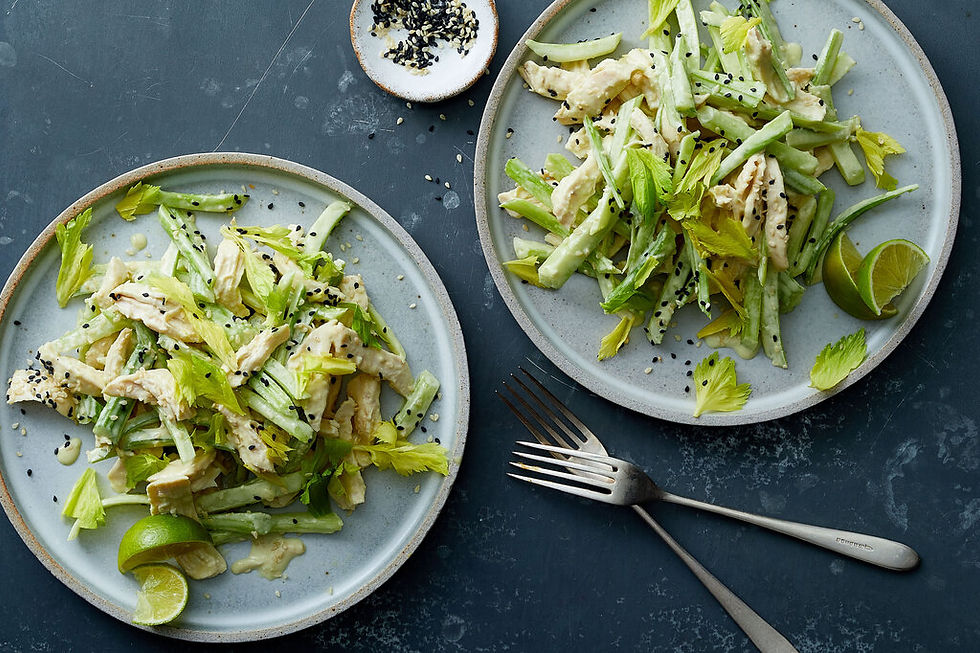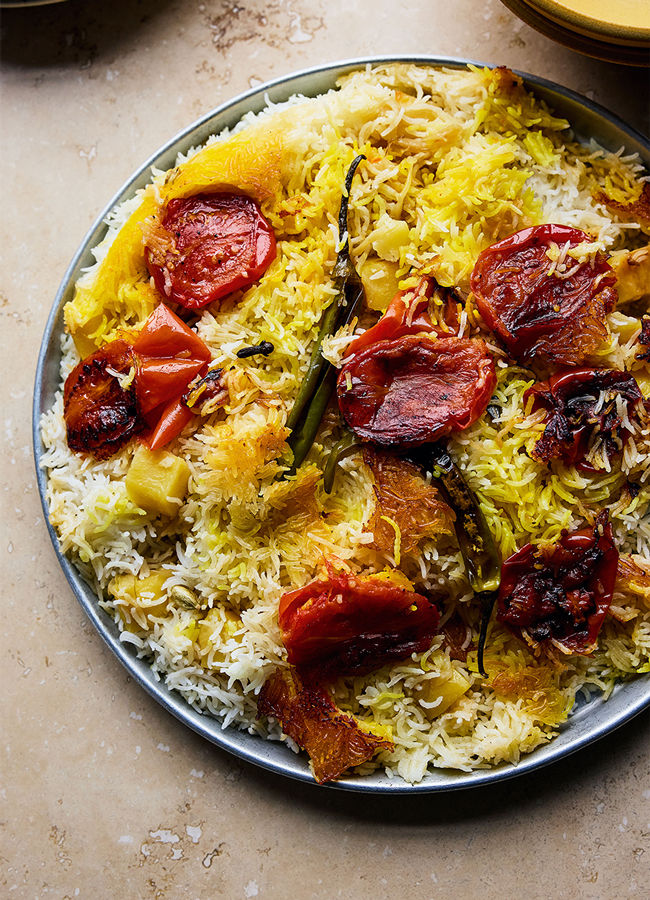The ultimate fusion dish
- rosemary
- Nov 11, 2022
- 6 min read
"It's Japan's chilli, its bacon cheeseburger, its meatloaf and gravy all in one, a hangover-killing man meal found in bars and restaurants up and and down the country narrow, never as good as Mom's" Sam Sifton/New York Times Magazine

I say ultimate fusion because the dish of which I speak - Katsu curry - is a combination of Indian, British, Japanese, French and German/Austrian cuisine, now trending everywhere in the world, maybe particularly in America, but then again maybe not. It seems to be big in the UK and here as well for example - Korea too.
Frankly it sounds like everything bad about fusion food to me, but then I have never tasted it and I'm not a fan of Japanese food. However, I have become increasingly aware of it of late - or at least of the word katsu, and when today I saw an even more amazingly awful sounding Spam katsu curry today in The Guardian Newsletter I decided it was time.
Where to start? Perhaps with a description of what it is:
"a thick, fragrant, porky roux glopped across delicate short-grain rice and topped - gilded really - with a deep-fried pork cutlet, served beside a tangle of shredded cabbage." Sam Sifton/New York Times Magazine
'Glopped' is not an enticing word is it? But yes indeed that seems to be a pretty apt description of what I found here, there and everywhere on the net, although increasingly the topping of 'deep-fried pork cutlet, seems to be being replaced by chicken - or on the healthy side - vegetarian and vegan alternatives, and on the fast-food side by KFC chicken.
For this seems to be fast food, almost at its fastest. Fast in the sense of, in its native Japan, anyway, being made with a block of premade curry roux bought from your local supermarket. And yes you can get them here in your local supermarket although the brand is S&B and not Vermont, which is apparently superior. To those in the know anyway. That picture at the top of the page is, if you like, the everyday home version, and it comes from the mother - Yumiko - of the Recipe Tin Eats lady - Nagi Maehashi - who has a spin-off blog called Recipe Tin Japan. She says it is the most popular recipe on the site and describes it thus
"When Japanese people say ‘having a curry tonight’, it is the Japanese curry that is made from the store-bought block of curry roux." Yumiko - Recipe Tin Japan
And indeed I saw in several places that it is often regarded these days as Japan's national dish - not sushi or sashimi. It's what ordinary people have for dinner at least once a week. And nowadays, according to the New York Times Magazine's Sam Sifton it is moving that way in America too:
"As an American weekend meal cooked for friends and family and served before an evening of televised football or after an afternoon of the real thing, katsu curry reaches heights to which stews and soups can only aspire as they sit warm and bubbling in their enamelled pots. Katsu curry defines rib-sticking. Fiery, rich and deep with smoky flavour, it towers above delicious."
All those multinational noodle places such as Wagamam, Momofuku and CoCo Ichibanya will have a katsu curry or two or three on their menu:
And actually I have just noticed the different approaches with the curry sauce, that pop up here and there - pour it over the crispy piece of meat - which seems a bit self-defeating to me, serve it separately in a discreet bowl or pool it at the side. It rarely seems to be ladled over the rice.
So Japan's national dish which is not really Japanese. Where did it come from? Well from India comes the curry sauce, but the British version thereof. So already we have fusion. The British tended to thicken it with flour and also sweeten it with things like apples. In the Meiji era (1868-1912), when Britain almost ruled the world, and certainly ruled India, military and trade delegations came to Japan. In this case we are particularly interested in the British Navy who used to serve curry to their sailors on the long voyage to the far east - well it was easy to make in bulk. The Japanese Army and Navy became impressed with this and started serving it to their serving men as well. Somewhere along the line though, they turned to the French technique of making a roux of flour and butter to thicken sauces. For the French were also out there in the Far East as well - and, of course, all things Japanese were big and influential in the European art world, so the Japanese reciprocated by being interested in all things foreign. And after the military services this katsu curry found its way into schools - and therefore homes - as well. Then somebody sometime around the late 19th century had the idea of serving the curry sauce - now loaded with vegetables such as carrots and potatoes - with a fried and breaded piece of pork, which is called tonkatsu, and which in itself came from Europeans such as the Germans and Austrians who brought their schnitzels to Japan. The rice was the pure Japanese contribution to the whole. And now, in the twentieth century this fusion dish has been exported back to the west. So in one dish you have the history of empires and trade from the 19th century until today.
A short bit on definitions, because I'm becoming confused about the various components:
Katsu - a cutlet
Tonkatsu - a pork cutlet
Katsukarē - katsu curry or Japanese curry - which is what we are talking about
Don or donburi - a rice bowl dish
Katsudon - a rice bowl dish with a cutlet - and often with egg as well
In many ways it epitomises to me some of the worst things about fast food. Mostly because of the packaged sauce, but also because of the deep-fried meat. But it has to be said that the Australian supermarket recipes are actually some of the most attractive looking and also they make some attempt at being healthier. Which perhaps is the next stage in the evolution of the dish - baked not fried, less sauce, more veg brown rice and so on. Here are a couple of their examples - and I have to say, some of the better looking ones. Coles on the left, Woolworths on the right.
I have to say that all of the recipes that I found included ringing endorsements, and there is no doubt that it is popular and so very interesting origin wise. However, I'm not sure I'm going to give it a try. Nevertheless here is a whole range of options to choose from if you feel like having a go: Woks of Life - Katsudon and also, next to it their Chicken katsu curry rice. Then we have Australian chefs, Matt Moran and Hayden Quinn followed by Gourmet Traveller's version and one from Tomoyuki Kita from a Sydney ramen house called Tenkomori. In the UK Jamie Oliver has a version as does the BBC in the person of Cassie Best. And we'll finish with an example from the Blogosphere - Marion's Kitchen - which looks much like the other blogosphere version at the top of the page. I suspect this is what it would look like if you ate it in a Japanese home.
And finally the outliers. This is perhaps the new directions this ever-changing dish is going into:
Nigel Slater's Grilled chicken and curry sauce - no rice here - and neither is katsu in the title, but he maintains it is 'a chicken supper inspired by a Japanese curry'; Spam fritters katsu curry - yes spam - from a website called Recipes from a Pantry; Meera Sodha's Katsu curry with panko aubergines and pickled radishes - for the vegetarians and vegans amongst you; from the SBS Feast Magazine there is Curried chicken katsu udon - noodles not rice; and finally and perhaps the most off-putting of all - Brown banana katsu curry with breaded cauliflower steaks from Tom Hunt. Will anyone make this do you think?
Years ago I read a book about Japan which contrasted the Japanese love for exquisitely beautiful and delicate things with what the author perceived as a terrible propensity for leaving rubbish everywhere and for the out-there strangeness of fashion and food. I think this dish is a supreme example of this. In fact Meera Sodha said of katsu curry that:
"Japan’s favourite dish may not be much of a looker, but then you should never judge a dish by its colour ... but this mysterious brown concoction is one of Japan’s favourite dishes. ... It’s a message to us all never to judge a dish by its colour."
Her aubergines look lovely.









































Comments